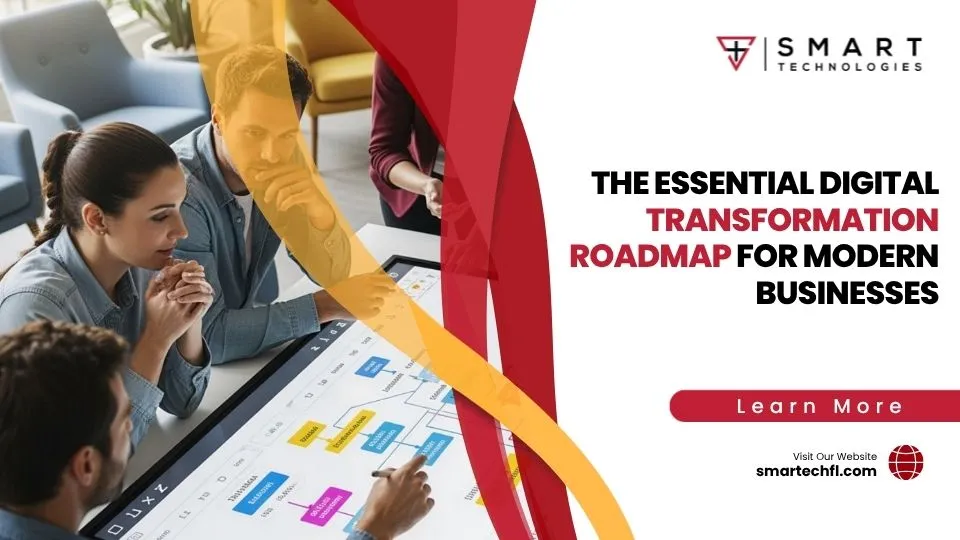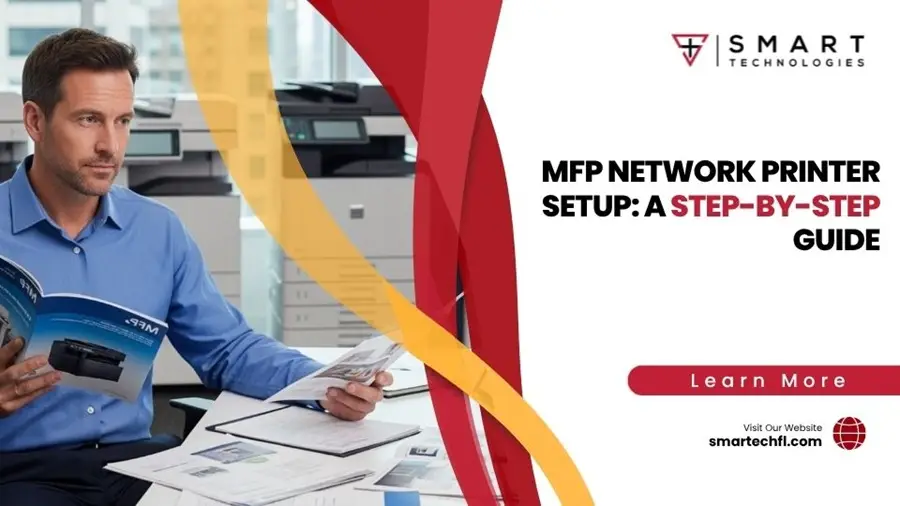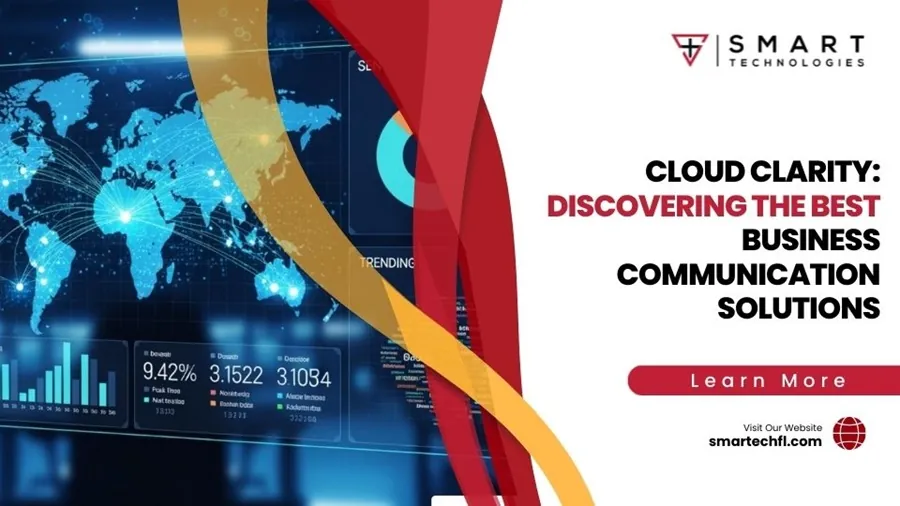Managed IT Services in Dayton Beach: What to Expect
Managed IT Services in Dayton Beach
Managed IT services have become an essential component for businesses looking to maintain a competitive edge in today’s technology-driven environment. These services encompass a range of IT support and management tasks that are outsourced to specialized providers. By leveraging managed IT services, businesses can focus on their core operations while ensuring their IT infrastructure is efficiently managed and secure.
In this article, we will explore the concept of managed IT services, the various types available, and the benefits they offer to businesses. We will also provide insights into selecting the right managed service provider (MSP) and understanding the importance of service level agreements (SLAs).

Understanding Managed IT Services
What are Managed IT Services?
Managed IT services refer to the practice of outsourcing IT management and support tasks to a third-party provider, known as a Managed Service Provider (MSP). These services can include a wide range of functions such as network monitoring, cybersecurity, data backup and recovery, and cloud services. The primary goal of managed IT services is to enhance the efficiency and reliability of a business’s IT operations while reducing costs.
Overview of Managed IT Services
Managed IT services have evolved significantly over the past few decades. Initially, businesses relied on in-house IT teams to handle all their technology needs. However, as technology became more complex and the demand for round-the-clock support increased, many businesses began outsourcing their IT functions to specialized service providers. This shift allowed companies to benefit from the expertise and resources of MSPs, leading to improved performance and reduced downtime.
Types of Managed IT Services
Core Types of Managed IT Services
Managed IT services can be broadly categorized into several core types, each addressing specific aspects of IT management:
- Managed Security Services: These services focus on protecting a business’s IT infrastructure from cyber threats. They include activities such as vulnerability assessments, intrusion detection, and implementing security protocols.
- Managed Cloud Services: With the increasing adoption of cloud computing, many businesses are turning to MSPs to manage their cloud infrastructure. These services include cloud migration, management, and optimization.
- Managed Print Services: These services manage a company’s printing needs, including printer maintenance, supplies, and optimization of print workflows.
Managed Security Services
Cybersecurity is a top priority for businesses today, and managed security services play a crucial role in safeguarding sensitive information and IT assets. Managed security services provide comprehensive protection through various measures, including:
- Vulnerability Assessments: Regular scans to identify and address potential security weaknesses.
- Intrusion Detection and Prevention: Monitoring network traffic to detect and prevent unauthorized access.
- Security Protocol Implementation: Establishing and maintaining security policies and procedures to ensure compliance and protection.
Managed Cloud Services
Cloud computing offers numerous advantages, such as scalability, flexibility, and cost savings. Managed cloud services help businesses leverage these benefits by providing:
- Cloud Migration: Assisting businesses in moving their applications and data to the cloud.
- Cloud Management: Ongoing management and optimization of cloud resources to ensure efficiency and cost-effectiveness.
- Cloud Security: Implementing security measures to protect cloud-stored data from breaches and unauthorized access.
Managed Print Services
Managed print services streamline a company’s printing operations by providing:
- Printer Maintenance: Regular maintenance and repair of printers to ensure they operate smoothly.
- Supply Management: Managing the supply of ink, toner, and other printing materials.
- Print Workflow Optimization: Analyzing and improving print processes to reduce costs and improve efficiency.
Benefits of Managed IT Services

Cost Savings and Predictable Pricing
One of the most significant advantages of managed IT services is the cost savings they offer. By outsourcing IT functions to an MSP, businesses can reduce the expenses associated with maintaining an in-house IT team. Managed IT services typically operate on a subscription model, where businesses pay a fixed monthly fee. This predictable pricing structure helps businesses manage their IT budgets more effectively.
Proactive Approach and Remote Monitoring
Managed IT services adopt a proactive approach to IT management, which helps prevent issues before they become major problems. MSPs use Remote Monitoring and Management (RMM) tools to continuously monitor a business’s IT infrastructure. This proactive approach ensures that potential issues are identified and resolved quickly, minimizing downtime and enhancing productivity.
Enhanced Security and Compliance
With the increasing prevalence of cyber threats, businesses must prioritize their cybersecurity measures. Managed security services provide robust protection against these threats. MSPs implement various security protocols, conduct regular vulnerability assessments, and ensure compliance with industry standards. This comprehensive approach to security helps protect sensitive data and IT assets.
Choosing a Managed IT Service Provider (MSP)
What to Look for in a Managed Service Provider
Selecting the right MSP is critical to the success of managed IT services. Businesses should consider the following criteria when choosing an MSP:
- Experience and Expertise: Ensure the MSP has a proven track record and expertise in managing IT services.
- Range of Services: Evaluate the range of services offered to ensure they align with your business needs.
- Customer Support: Assess the quality and availability of customer support services provided by the MSP.
Common Managed Services Models
MSPs offer various service models to cater to different business needs. Understanding these models can help businesses choose the right level of support:
- Break-Fix Model: Traditional model where services are provided on a reactive basis.
- Proactive Model: Services are delivered proactively, with continuous monitoring and maintenance.
- Fully Managed Model: Comprehensive IT management, including strategic planning and support.
Evaluating Service Level Agreements (SLAs)
Service Level Agreements (SLAs) are crucial components of managed IT services contracts. They define the level of service expected from the MSP and outline the responsibilities of both parties. Key components of an effective SLA include:
- Performance Metrics: Clearly defined performance metrics to measure the MSP’s service delivery.
- Response Times: Specified response times for addressing and resolving IT issues.
- Penalties and Remedies: Penalties for failing to meet the agreed-upon service levels and remedies for service deficiencies.
Implementing Managed IT Services
Steps to Deploy Managed IT Services
Implementing managed IT services involves several crucial steps to ensure a seamless transition and optimal performance. Here’s a detailed breakdown:
- Assessment of Business Needs: Start by evaluating your current IT infrastructure and identifying areas that need improvement. This includes assessing hardware, software, network capabilities, and security measures.
- Planning and Implementation: Once the assessment is complete, work with your chosen MSP to create a detailed implementation plan. This plan should include timelines, resource allocation, and specific tasks required for deployment.
- Ongoing Monitoring and Adjustments: Post-deployment, continuous monitoring is essential to ensure that the services are functioning as expected. Regular reviews and adjustments may be necessary to address any emerging issues or to optimize performance.
Integration with Existing Systems
Ensuring that managed IT services integrate smoothly with your existing systems is critical for maintaining operational continuity. This involves:
- Compatibility Assessments: Conducting thorough compatibility assessments to ensure new solutions work well with current infrastructure.
- Seamless Transition: Planning for a seamless transition to minimize downtime and disruption. This may include phased rollouts and pilot testing.
- Data Migration: Managing data migration carefully to prevent data loss or corruption during the transition.
Training and Support Services
Effective managed IT services include comprehensive training and ongoing support to help your team adapt to new systems and processes. This can involve:
- Staff Training: Providing thorough training sessions for staff to ensure they are comfortable using new tools and systems.
- Help Desk Support: Offering 24/7 help desk support to address any issues or questions that arise.
- Ongoing Education: Continuously updating staff on new features, security practices, and best use cases.
Managed IT Services for Small and Medium-Sized Businesses
Why SMBs Should Consider Managed IT Services
Small and medium-sized businesses (SMBs) face unique challenges when it comes to IT management, such as limited resources and budgets. Managed IT services offer tailored solutions to address these challenges:
- Cost-Effective Solutions: SMBs can benefit from the cost savings associated with managed IT services, which provide enterprise-level support at a fraction of the cost.
- Access to Expertise: By outsourcing IT needs, SMBs gain access to a team of experts with specialized knowledge and skills.
- Scalability: Managed IT services offer scalable solutions that can grow with the business, ensuring that IT infrastructure remains aligned with business needs.
Future Trends in Managed IT Services

Emerging Technologies in Managed IT
The managed IT services landscape is constantly evolving, with new technologies emerging that enhance service delivery and efficiency. Some key trends include:
- AI and Machine Learning: Integrating AI and machine learning to automate routine tasks, predict issues before they occur, and enhance decision-making.
- Automation: Utilizing automation to streamline processes, reduce manual intervention, and improve accuracy.
- IoT Integration: Managing and securing the growing number of IoT devices within business environments.
The Growing Importance of Cybersecurity
As cyber threats become more sophisticated, the role of cybersecurity within managed IT services continues to grow. Future trends include:
- Advanced Threat Detection: Utilizing advanced threat detection technologies to identify and mitigate cyber threats in real-time.
- Zero Trust Security Models: Implementing zero trust models that require strict verification for every access request.
- Enhanced Data Privacy: Ensuring compliance with increasingly stringent data privacy regulations and protecting sensitive information.
Predictions for the Managed Services Market
The managed services market is poised for significant growth in the coming years. Key predictions include:
- Market Expansion: The global managed services market is expected to grow substantially, driven by increasing demand for IT outsourcing and managed solutions.
- Service Diversification: MSPs will continue to diversify their service offerings to meet evolving business needs.
- Increased Adoption: More businesses, especially SMBs, will adopt managed IT services to enhance their IT capabilities and remain competitive.
What People May Also Ask
What are Managed IT Services?
Managed IT services involve outsourcing IT management and support to a specialized provider, which helps businesses improve efficiency and reduce costs.
How do Managed IT Services Benefit My Business?
Managed IT services offer numerous benefits, including cost savings, enhanced security, access to expert support, and improved IT performance.
What is the Difference Between Managed IT Services and Traditional IT Support?
Traditional IT support typically involves reactive, on-demand services, while managed IT services provide proactive, continuous management and support.
How Do I Choose the Right Managed Service Provider?
When selecting an MSP, consider factors such as experience, range of services, customer support quality, and the robustness of their SLAs.
What Should I Look for in a Service Level Agreement (SLA)?
An effective SLA should include clearly defined performance metrics, response times, and penalties for service failures, ensuring accountability and high service standards.
Final Thoughts: The Impact of Managed IT ServicesConclusion
In conclusion, managed IT services offer a comprehensive solution for businesses looking to enhance their IT infrastructure, improve security, and reduce costs. By understanding the various types of managed IT services, the benefits they provide, and the factors to consider when choosing an MSP, businesses can make informed decisions that align with their goals.
As technology continues to evolve, managed IT services will remain a critical component for business success, offering scalable, efficient, and secure IT solutions.
You can contact us by phone, email, or by visiting our offices:
- Phone: (386) 261-8323
- Email: contact@smarttechfl.com
- Address: 771 Fentress Blvd. #10, Daytona Beach, FL 32114












